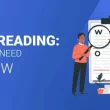Introduction
In 2025, writing content that ranks high on Google isn’t just about stuffing keywords into a blog post. Today’s SEO is smarter, faster, and more human-friendly. With AI tools improving, search engines updating their algorithms, and readers becoming more selective, the demand for well-optimized and helpful content is higher than ever.
If you’re a writer, business owner, blogger, or marketer, mastering SEO content writing is a skill you can’t ignore. But the good news is, writing SEO content isn’t hard—if you know what really matters.
This guide will walk you through the best practices for writing SEO content that ranks in 2025—using simple language and smart strategies that work.
Understand What SEO Content Really Is
SEO content is any piece of writing that is created with the goal of appearing in search engine results, especially Google. This includes:
- Blog posts
- Landing pages
- Product descriptions
- How-to guides
- FAQs
- Articles and listicles
But it’s not just about showing up on search engines—it’s also about providing real value to readers.
Start with Smart Keyword Research
Keywords are still the foundation of SEO content. But in 2025, keyword use is more about context and intent than exact matches.
Here’s how to do smart keyword research:
- Use tools like Google Keyword Planner, Ubersuggest, Ahrefs, or SEMrush.
- Focus on long-tail keywords like “best SEO writing tips for beginners” rather than just “SEO tips.”
- Think about user intent: Are people searching to learn, buy, compare, or solve a problem?
- Look for related keywords and questions using tools like AlsoAsked or Google’s “People Also Ask” section.
Once you pick your main keyword, include it in your:
- Title
- Meta description
- First 100 words
- Headings (where natural)
- Image alt text
- URL (slug)
But remember—never force it. Google now understands meaning, not just exact words.
Write for Humans First, Search Engines Second
Google’s algorithms (like Helpful Content Update) now reward content that actually helps readers. This means your content must:
- Be clear, well-structured, and easy to read
- Answer real questions people are asking
- Avoid fluff or filler content
- Use a friendly and engaging tone
Quick tips for writing better:
- Use short paragraphs (2–4 lines max)
- Add bullet points and numbered lists
- Use simple words—write like you’re talking to a 10th-grade student
- Include examples and real-world applications
- Avoid jargon unless necessary
Structure Your Content for Easy Reading and Scanning
People don’t read online the way they read books. They scan.
To make your content scannable:
- Use clear headings (H1, H2, H3)
- Break your content into sections
- Add a table of contents for long posts
- Highlight key points in bold or italics
- Use visuals like images, infographics, and charts
Search engines love well-structured content because it improves the user experience, which leads to better rankings.
Optimize Your Title and Meta Description
The title tag and meta description are what people see on Google before clicking. A great title and description can boost your click-through rate (CTR)—which also helps your ranking.
1. Title tag tips:
- Include your main keyword
- Keep it under 60 characters
- Make it clear and engaging
2. Meta description tips:
- Use your primary keyword naturally
- Keep it under 160 characters
- Add a call to action (like “learn more” or “see how”)
3. Example:
Title: Writing SEO Content That Ranks in 2025 | Simple Guide
Meta Description: Learn how to write SEO content that ranks in 2025 with simple tips, smart strategies, and tools for better Google visibility.
Use Internal and External Links
1. Internal Links:
Link to other related pages on your own website. This helps users stay longer and helps Google understand your site structure.
Example: If you mention “on-page SEO,” link to your blog post about on-page SEO techniques.
2. External Links:
Link to trusted sources like industry websites, tools, or research papers. This adds credibility to your content and improves SEO.
Make sure all links open in a new tab and add rel=”noopener” or rel=”nofollow” if needed.
Add Visuals and Use Alt Text
Images make your content more engaging and easier to understand. Use them to:
- Break up text
- Show examples
- Support key points
Always use alt text to describe images. This not only helps with accessibility but also helps search engines understand your content.
Example: Alt text: “Screenshot of Google Keyword Planner showing SEO keyword ideas”
Focus on E-E-A-T: Experience, Expertise, Authoritativeness, Trust
Google now emphasizes E-E-A-T—especially in content related to health, finance, or education.
To boost your E-E-A-T:
- Mention your background or qualifications in the subject
- Link to your social profiles or author bio
- Show real-life experience or case studies
- Use data and references from reliable sources
Update Your Content Regularly
SEO isn’t a one-time job. Google favors fresh, updated content.
Come back to your old posts every 3–6 months and:
- Update stats and links
- Add new insights or tools
- Improve outdated sections
- Optimize for new keywords
This simple step can help older posts climb back up the rankings.
Track Your Performance and Improve
Use tools like:
- Google Search Console to see how your content performs in search
- Google Analytics to track time on page, bounce rate, and traffic sources
- Ahrefs or SEMrush to find keyword gaps and monitor ranking positions
Look at what’s working—and do more of it. If something isn’t ranking, improve it instead of deleting it.
Bonus: Tools to Help You Write SEO Content Faster
Here are some handy tools that can help:
| Tool | Use |
|---|---|
| Surfer SEO | Content scoring and keyword optimization |
| Grammarly | Grammar, spelling, and clarity check |
| Hemingway Editor | Improves readability |
| ChatGPT | Brainstorming ideas and outlines |
| Canva | Creating visuals and infographics |
| Google Trends | Finding trending topics |
Conclusion
SEO content writing in 2025 is all about providing real value, using smart keyword strategy, and creating content that both people and search engines love. You don’t need to be a tech wizard—just stay clear, helpful, and focused on the reader. Use tools, structure your content well, and update it often. Whether you’re blogging, selling, or educating, mastering SEO writing can bring long-term success and visibility. Start with one page at a time, apply these tips, and watch your content rise in search rankings.











